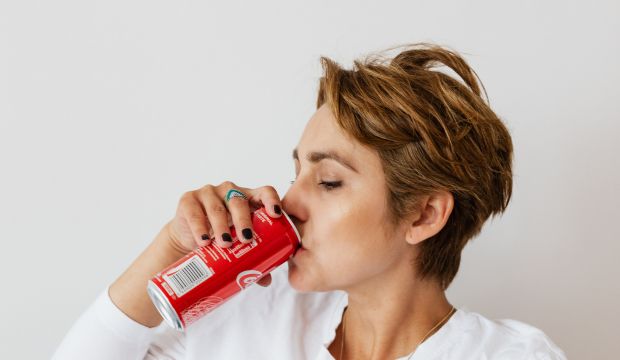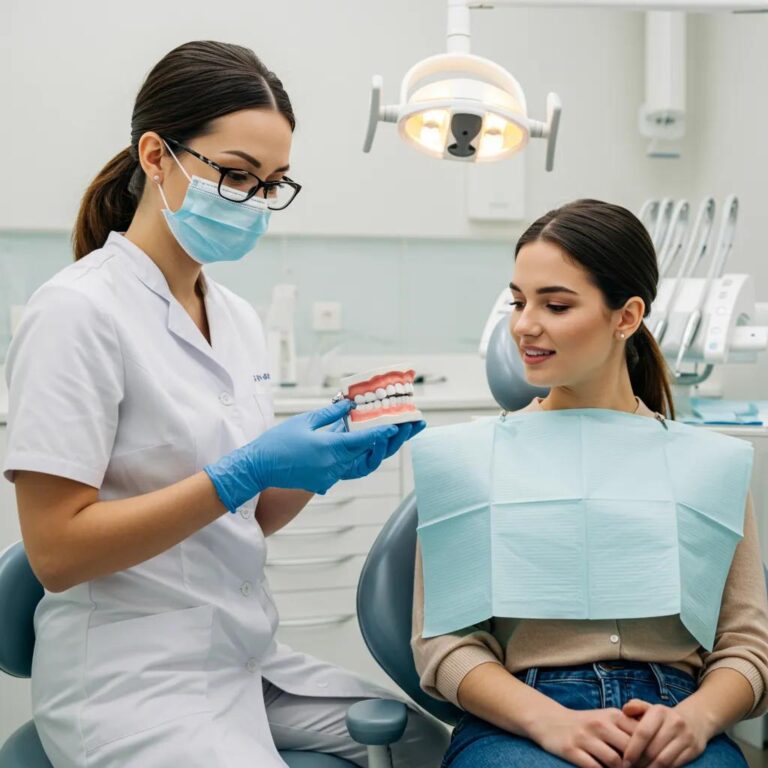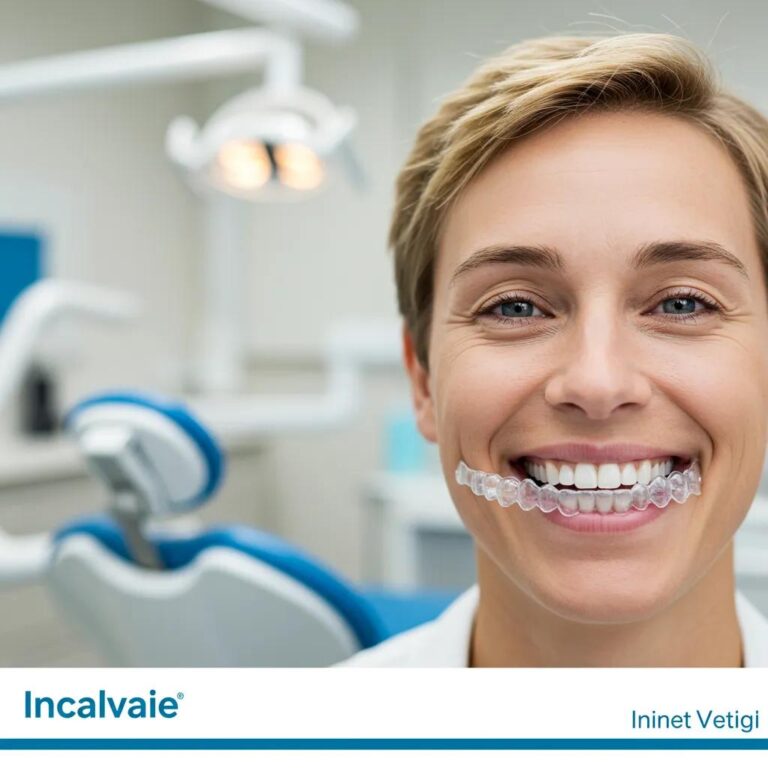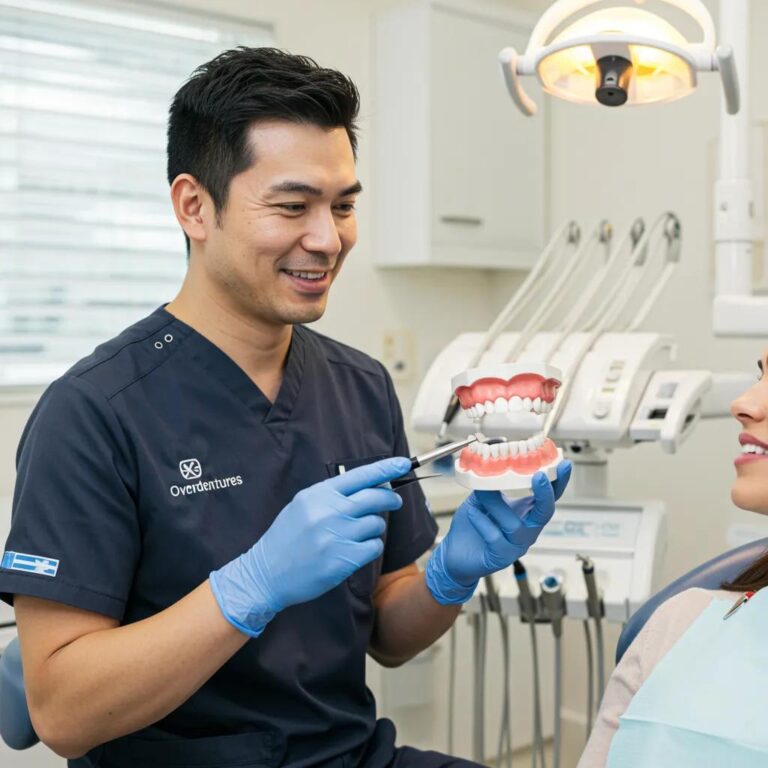Overdentures for Stability: Your Complete Guide to Secure, Comfortable Denture Solutions
Overdentures are removable or fixed dental prostheses that gain extra support by anchoring to dental implants or remaining teeth, delivering markedly improved denture stability and chewing ability. This guide explains how implant-supported overdentures and other overdenture types work, why they reduce slippage and bone loss, and which options suit different clinical situations. Many people with unstable dentures experience soreness, difficulty eating, and social anxiety; overdentures address those problems by mechanically and biologically stabilizing the prosthesis. You will learn the mechanical principles of denture stabilization, the typical treatment process at a local practice, the measurable benefits versus traditional dentures, realistic cost factors and financing options, and practical care steps to keep overdentures functioning long-term. Throughout the article we use terms like denture stabilization, implant-supported overdentures, snap-in dentures, and denture attachments so you can compare options and make an informed decision about treating jawbone loss and improving daily function.
What Are Overdentures and How Do They Improve Denture Stability?
An overdenture is a dental prosthesis that receives support and retention from implants or retained natural teeth, rather than relying solely on suction and gum contact; this anchorage reduces movement and increases chewing efficiency. The mechanism is straightforward: implants or tooth roots act as stable anchors, and attachments (locator, ball, or bar systems) connect the overdenture to those anchors, converting lateral forces into controlled loads. The net benefit is greater retention, fewer sore spots, and improved speech and diet, which supports overall oral health. Understanding the main attachment types clarifies why some overdentures feel more secure than others and leads naturally to a review of specific attachment systems.
What is an overdenture and how does it differ from traditional dentures?
An overdenture fits over implants or prepared tooth roots, while traditional dentures rest only on gums and the underlying bone, which can lead to movement and instability. Overdentures transfer functional loads through implants to the jawbone, improving retention and reducing mucosal pressure that causes sore spots. Patients typically report increased confidence when eating and speaking because the prosthesis resists dislodgement. This mechanical difference also influences long-term oral health and the likelihood of bone preservation.
How do implant-supported overdentures enhance stability and comfort?
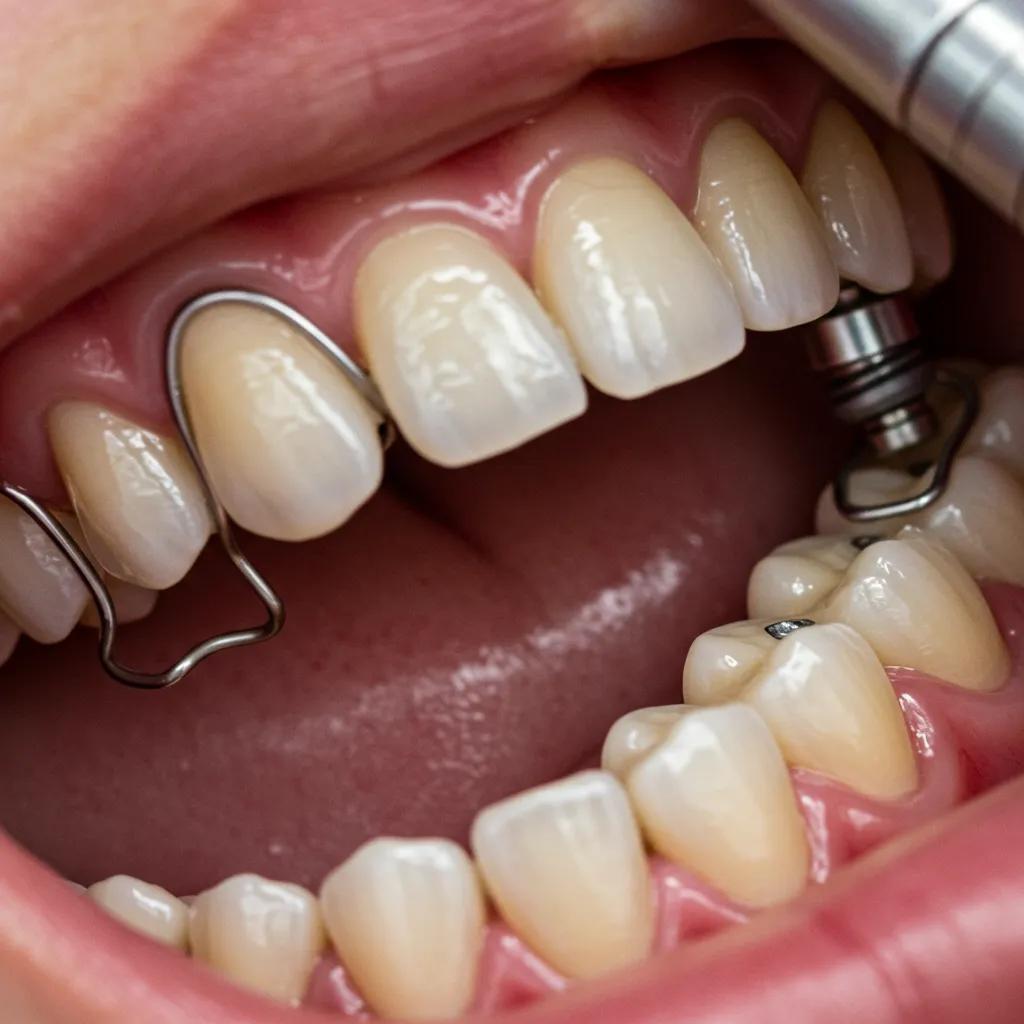
Implant-supported overdentures use osseointegrated dental implants as fixed anchoring points that secure attachment housings, such as locator, ball, or bar systems, thereby minimizing prosthesis rotation and displacement. These attachment systems provide differing degrees of retention and ease of maintenance: locators are low-profile and user-friendly, bars provide cross-arch stabilization, and ball attachments are simple and repairable. By limiting micromovement, implant anchorage reduces tissue irritation and improves masticatory efficiency, which in turn enhances nutrition and quality of life. Choosing the attachment depends on anatomy, patient dexterity, and maintenance preferences.
Mandibular Implant-Supported Overdentures: Attachment System Review
Mandibular implant supported overdentures by comparing different attachment systems used in mandibular implant supported overdentures by analyzing the available literature and clinical studies. The aim of this systematic review and meta-analysis is to compare different attachment systems used in mandibular implant supported overdentures by analyzing the available literature and clinical studies. The aim of this systematic review and meta-analysis is to compare different attachment systems used in mandibular implant supported overdentures by analyzing the available literature and clinical studies.
Mandibular implant-supported overdenture: A systematic review and meta-analysis for optimum selection of attachment system, 2021
What types of overdentures are available for denture stabilization?
Overdenture types include implant-supported overdentures, tooth-supported overdentures, bar-retained, ball-retained, locator/snap-in, and fixed hybrid prostheses, each with unique indications and maintenance needs. Bar-retained systems link implants with a metal bar for rigidity and even load distribution, while ball and locator attachments offer simpler snap-in retention for removable convenience. Fixed hybrid overdentures (fixed prostheses on implants) behave more like non-removable teeth and require different hygiene, whereas tooth-supported overdentures leverage existing roots for retention. Understanding these types helps match clinical goals—stability, cost, ease of care—to the chosen prosthesis.
Choosing Attachment Systems for Mandibular Implant-Supported Overdentures
The choice of attachment systems that connect the complete denture to the implant is crucial for the success of implant-supported overdentures. Various attachment systems are available, each with its own advantages and disadvantages. The selection of the most appropriate attachment system depends on several factors, including the number and position of implants, the patient’s oral hygiene, and the desired level of retention and stability. This article discusses the different types of attachment systems used in implant-supported overdentures and provides guidance on how to select the most suitable system for each patient.
Mandibular implant-supported overdentures: attachment systems, and number and locations of implants–Part I, A Warreth, 2015
How do overdentures help prevent jawbone loss and preserve oral health?
Overdentures supported by implants stimulate the jawbone through functional loading, which counters the disuse atrophy that follows tooth loss and conventional denture wear; this biological mechanism slows bone resorption. When implants transfer chewing forces into the bone, they promote remodeling and volume preservation, which supports facial structure and long-term prosthesis fit. Over time, maintaining bone height reduces the need for extensive grafting and helps keep prostheses stable. These bone-preserving effects are central to the long-term value proposition of implant-retained solutions and lead into the clinical treatment steps patients typically follow.
After discussing the types and biological benefits of overdentures, many patients want to know how the treatment actually unfolds in a local practice. Dental Krafts offers implant-supported overdentures in Sacramento and schedules thorough consultations to assess denture stabilization needs; contact Dental Krafts to arrange an evaluation and learn how implant anchorage can improve your prosthesis retention.
What Is the Overdenture Treatment Process at Dental Krafts?
The overdenture treatment process at a modern dental practice begins with diagnostics, progresses through surgical implant placement and osseointegration, and ends with precise prosthetic fabrication and scheduled maintenance. At the first visit clinicians evaluate oral health with a comprehensive exam and digital imaging to map anatomy, then present a tailored plan matching implant count and attachment type to patient goals. Surgical placement uses sterile protocols and implant planning to position anchors for optimal load transfer, followed by a healing period when osseointegration secures implants into bone. The prosthetic phase emphasizes accurate impressions, CAD/CAM design, and attachment integration so the final overdenture offers stable retention and patient comfort.
What happens during the initial consultation and assessment?
The initial consultation includes a clinical exam, review of medical and dental history, and diagnostic imaging such as digital X-rays to evaluate bone volume and implant feasibility. Clinicians discuss patient priorities—stability, budget, and maintenance—and outline treatment options that balance clinical indications with lifestyle needs. A clear treatment timeline and expected outcomes are provided so patients understand next steps and potential preparatory work like extractions or grafts. This diagnostic clarity supports safer implant placement and predictable overdenture outcomes.
How are dental implants placed to support overdentures?
Implant placement is a surgical procedure in which titanium fixtures are inserted into predetermined sites in the jaw to serve as anchors for overdenture attachments. The surgeon selects implant size and number based on bone quality, prosthetic requirements, and occlusal forces, aiming for positions that maximize mechanical advantage and hygiene access. Local anesthesia and sedation options enhance comfort during surgery, and careful flap management preserves soft tissue health. Precise implant positioning directly affects prosthetic stability and simplifies the attachment integration process.
What is the healing and osseointegration phase?
Following implant placement, osseointegration—the biological bonding of bone to the implant surface—occurs over several weeks to months, during which controlled loading and good oral hygiene are essential for success. Temporary prostheses may be adjusted to avoid undue pressure near surgical sites while allowing functional eating, and clinicians monitor healing at scheduled intervals. Signs of healthy osseointegration include lack of pain, stable implants on evaluation, and healthy surrounding soft tissues. Proper management during this phase sets the stage for durable overdenture retention and reduced long-term complications.
How are overdentures fabricated and fitted for optimal stability?
Overdenture fabrication involves accurate impressions, digital design, try-in stages, and incorporation of chosen attachments so the prosthesis seats securely and distributes forces evenly. Modern CAD/CAM workflows improve fit accuracy and reduce laboratory guesswork, while attachment housings are tested for retention and patient comfort during the try-in. Final adjustments focus on occlusion, vestibular contours, and hygienic access around implants, ensuring stability without impinging on soft tissues. The precision of fabrication directly influences long-term retention and the ease of routine maintenance.
What can patients expect during follow-up and adjustment visits?
Follow-up visits focus on attachment wear assessment, soft tissue health, occlusal checks, and patient education for daily maintenance, typically scheduled every three to six months depending on needs. Clinicians replace worn retention inserts, adjust pressure points, and evaluate peri-implant tissues to catch early signs of complications. Patients learn how to remove, clean, and re-seat removable overdentures and when to report unusual mobility or discomfort. Regular follow-up preserves stability and extends the service life of both attachments and prostheses.
After outlining the clinical pathway, it helps to weigh measurable benefits versus traditional dentures and to quantify functional improvements that patients can expect from implant-retained approaches.
What Are the Benefits of Implant-Supported Overdentures Compared to Traditional Dentures?
Implant-supported overdentures deliver measurable improvements in chewing ability, speech, comfort, and bone preservation compared with mucosa-supported dentures, primarily because implants provide stable anchorage and transmit functional loads to bone. These outcomes arise from mechanical stabilization—reduced prosthesis movement—and biological benefits—preserved bone height—both of which translate into improved nutrition, fewer relines, and higher patient satisfaction. The following details outline functional, psychological, and long-term oral health advantages that guide patient decisions.
Different patient outcomes can be compared by measurable attributes to highlight benefit magnitudes and clinical tradeoffs.
| Outcome Measure | How Overdentures Perform | Typical Improvement |
|---|---|---|
| Chewing ability | Implant anchorage increases bite force and bolus breakdown | 60–70% of natural chewing restored |
| Speech clarity | Reduced prosthesis movement lowers lisps and clicks | Noticeable immediate improvement |
| Sore spot frequency | Less mucosal rubbing due to stability | Significant reduction |
| Bone preservation | Functional loading of implants slows resorption | Maintains jaw height over years |
This table clarifies expected functional gains and shows why implant-retained options are often recommended for long-term oral health. The next sections break down specific benefit categories and patient-centered examples.
How do overdentures improve chewing ability and speech?
Overdentures reduce prosthesis movement and increase occlusal force transmission, enabling more efficient food breakdown and clearer articulation when speaking. Patients typically report being able to eat firmer foods and enjoying a more varied diet, which supports nutrition and overall health. Speech improves because stabilized prostheses reduce unpredictable shifts that cause lisps or clicks during conversation. These functional gains often translate into immediate quality-of-life improvements after final fitting.
Implant-Supported Mandibular Overdentures: Improving Stability and Function
Edentulous patients often experience problems with their mandibular complete dentures. Lack of stability and retention of their mandibular denture, together with a decreased chewing ability, are the main complaints of these patients [1]. The use of dental implants with a removable overdenture results in an evident improvement in stability and retention, leading to better chewing function and patient satisfaction.
Implant-supported mandibular overdentures: a retrospective case series study in a daily dental practice, 2021
In what ways do overdentures increase denture comfort and confidence?
Comfort increases as overdentures eliminate the need for excessive adhesives and reduce mucosal pressure, which minimizes sore spots and gag triggers. Greater retention provides psychological confidence in social situations and during meals, reducing self-consciousness about slipping dentures. The secure fit also reduces the frequency of emergency relines and adjustments, giving patients predictable daily performance. Confidence with a stable prosthesis often encourages more normal eating, speaking, and socializing.
How do implant-retained overdentures contribute to bone preservation?
Implants transfer occlusal loads into the jaw, stimulating bone remodeling rather than allowing disuse resorption that follows mucosa-supported dentures. This stimulation preserves ridge height and facial contours, lowering the risk of progressive bone loss that complicates future prosthetic options. Over time, sustained bone volume maintains prosthesis stability and reduces the need for extensive grafting if additional treatments become necessary. Bone preservation is therefore both a functional and esthetic advantage of implant-supported approaches.
What makes snap-in dentures a popular denture stabilization option?
Snap-in dentures, commonly using locator attachments, combine removable convenience with improved retention at relatively moderate cost and straightforward maintenance. The low-profile design is patient-friendly for insertion and removal, while replacement retention inserts are inexpensive and simple to service. Compared with fixed solutions, snap-in systems offer easier hygiene access and lower upfront cost, making them an attractive stabilization option for many patients. The tradeoff is that snap-in systems may require periodic insert replacement as retention decreases with wear.
How do overdentures reduce common problems with traditional dentures?
Overdentures mitigate typical issues—slippage, adhesive dependence, sore spots, and limited diet—by providing mechanical anchorage and more even force distribution during chewing. Reduced movement lowers friction-related ulcers and decreases the need for frequent relines and adhesive products. Improved function supports better mastication and nutrient intake, which can affect systemic health positively. Addressing these common problems often changes patient expectations about prosthetic performance and leads to higher long-term satisfaction.
A practical comparison of costs and financing clarifies how these benefits map to investment and available savings options in the Sacramento area.
How Much Do Overdentures Cost and What Financing Options Are Available?
Cost for implant-supported overdentures depends on implant count, attachment type, prosthetic materials, laboratory fees, and additional procedures like bone grafts or extractions; these variables shape a realistic price range for treatment planning. Typical drivers include number of implants per arch (two versus four or more), complexity of surgical placement, and whether a fixed hybrid or removable overdenture is selected. Local specials and membership plans can reduce initial out-of-pocket expenses, while insurance and third-party financing may cover parts of the prosthetic or surgical fees. Below is a practical cost breakdown that maps common overdenture types to estimated price drivers and example offers.
| Overdenture Type | Typical Cost Drivers | Estimated Price Range / Dental Krafts Offer |
|---|---|---|
| Snap-in (2 implants) | Implants, locator attachments, base | Moderate range; single dental implant special for $3499 may lower per-implant cost |
| Bar-retained (4+ implants) | Additional implants, bar fabrication, lab fees | Higher range due to bar and lab complexity |
| Fixed hybrid | Multiple implants, complete framework, lab work | Highest range; extensive lab and implant count |
| Tooth-supported overdenture | Root treatments, overdenture fabrication | Variable; depends on retained root condition |
This cost table clarifies where expenses concentrate and how local offers might influence budgeting. The following subsections explain factors and available offers in more detail.
What factors influence the cost of implant-supported overdentures in Sacramento?
Primary cost factors include the number and type of implants, attachment system complexity, prosthetic materials, laboratory fabrication fees, and preparatory procedures such as extractions or bone grafts. Surgical complexity and anesthesia choices also affect fees, as do follow-up visits and maintenance parts like retention inserts. Local market conditions and clinician experience influence pricing variability, so transparent estimates after diagnostic imaging provide the best baseline. Considering long-term durability and potential reduced replacements is critical when comparing upfront costs.
How does Dental Krafts’ implant special offer affect overall treatment cost?
Dental Krafts offers a single dental implant special for $3499, which includes placement, restoration, extraction, and bone graft if needed; this packaged price can reduce per-implant expenses for certain treatment plans. For patients who can benefit from staged approaches or need individual implants as foundation points, the special helps make implant anchorage more accessible. Eligibility and whether the special applies to a full overdenture plan depend on case complexity, so discussing specifics during the consultation clarifies how the offer integrates into an overall treatment budget.
What insurance coverage and payment plans are available for overdenture patients?
Insurance coverage varies widely; some plans cover portions of prosthetic components or lab fees while others may apply to extractions and limited surgical codes. Many practices offer in-house payment plans, third-party financing options, or membership savings to spread costs, and Dental Krafts provides a “Smile Club Savings” plan that offers up to 20 percent discounts on various services. These offers can reduce upfront costs and make staged or combined treatment plans more accessible for qualifying patients.
How do costs compare between different types of overdentures?
Relative cost tiers generally place snap-in removable overdentures in a moderate range, bar-retained solutions higher due to bar fabrication and lab complexity, and fixed hybrid prostheses at the top because of implant count and framework work. Maintenance and long-term component replacement should be included when comparing lifetime costs: some removable systems have lower upfront cost but require periodic insert replacements, whereas fixed solutions may have higher initial expense but fewer removable component costs. Evaluating total cost over the prosthesis lifecycle clarifies value beyond sticker price.
Are there long-term savings with overdentures due to durability and maintenance?
Overdentures can offer long-term savings by reducing the frequency of relines, improving nutrition and general health, and minimizing future complex rework that arises from progressive bone loss with conventional dentures. Durable implant anchors and well-fitted prostheses can last many years with routine maintenance, making lifecycle cost-per-year favorable compared with repeated conventional denture adjustments. Factoring in quality-of-life improvements and reduced ancillary costs (adhesives, frequent appliance replacements) demonstrates the long-term value of investing in denture stabilization.
Before moving to daily care, consider a quick checklist of treatment decision questions to bring to your consultation.
- What is my primary goal: stability, comfort, cost, or fixed teeth?
- How many implants can my bone support without grafting?
- Which attachment system fits my manual dexterity and hygiene needs?
- What are realistic timelines for surgery, healing, and final prosthesis?
- How do local specials or membership plans affect my out-of-pocket costs?
These questions prepare patients for a focused consultation and lead naturally into care and maintenance requirements for long-term overdenture stability.
How Should You Care for Overdentures to Ensure Longevity and Stability?

Daily care, scheduled professional maintenance, and prompt troubleshooting preservation are essential to maintain overdenture stability and protect implant health; a consistent routine supports attachment longevity and peri-implant tissue health. Removable overdentures require nightly cleaning and periodic retention insert replacement, while fixed hybrid prostheses need meticulous oral hygiene around implant abutments and professional biofilm removal. Regular follow-ups allow clinicians to monitor attachment wear and soft tissue health so early interventions prevent complications. The next paragraphs provide actionable cleaning steps, maintenance intervals, common issue resolutions, and safe handling practices.
Before the table below, here is a clear daily cleaning checklist to implement.
- Remove and rinse: Rinse removable overdentures after meals to dislodge food particles.
- Brush attachments: Gently brush implant attachments and prosthesis housings with a soft brush.
- Soak and clean: Use non-abrasive denture cleaner for overnight soaking when recommended.
- Oral hygiene: Clean around implant collars and gums with a soft toothbrush and interdental brush.
These daily steps reduce biofilm buildup and protect attachments; consistent habits simplify professional maintenance and reduce emergency visits.
| Component | Recommended Maintenance Frequency | Typical Issues & Resolution |
|---|---|---|
| Retention inserts | Every 6–12 months (or as needed) | Worn inserts → replace to restore retention |
| Prosthesis fit & relines | Annually or with changes in fit | Relines or adjustments to eliminate pressure spots |
| Professional implant/prosthesis cleaning | Every 3–6 months | Remove calculus and biofilm to protect implants |
| Attachment hardware (screws, clips) | Inspection at every visit | Tightening or replacement if loose or damaged |
Keeping to this schedule helps sustain denture stabilization and reduces the likelihood of prosthesis failure. The following sections outline common problems and practical remedies.
What is the recommended daily cleaning routine for implant-supported overdentures?
A practical daily routine includes removing and rinsing removable overdentures after meals, brushing prosthetic teeth and attachment housings with a soft brush, cleaning around implant abutments with an interdental brush, and soaking removable dentures overnight if advised. For fixed hybrids, meticulous brushing and use of floss or proxabrushes around implant interfaces is critical. Avoid abrasive cleaners and hot water that can warp prosthetic materials. Consistent daily care preserves attachment retention and peri-implant health.
How often should professional maintenance and check-ups be scheduled?
Professional maintenance is commonly scheduled every three to six months depending on oral health, attachment wear, and systemic health factors, with more frequent visits for patients with periodontal history. During visits clinicians evaluate attachment function, replace worn inserts, perform deep cleaning around implants, and assess prosthesis fit. Adhering to scheduled maintenance prevents minor wear from becoming clinical failures. Patients with decreased dexterity or higher inflammation risk may need tighter recall schedules.
What common issues can arise with overdentures and how are they resolved?
Frequent issues include decreased retention due to worn inserts, sore spots from pressure points, attachment component fracture, and peri-implant inflammation from inadequate hygiene. Resolution pathways range from simple retention insert replacement and minor relines to more extensive adjustments of occlusion and soft tissue management. Early detection during routine check-ups allows quick, conservative repairs rather than complex remediation. Prompt hygiene correction and professional cleaning typically reverse early soft tissue inflammation.
How do you maintain oral health with overdentures?
Maintain peri-implant and mucosal health by brushing twice daily, cleaning around implants with interdental brushes or floss, and using antimicrobial rinses as recommended by your clinician. Monitor for signs of redness, bleeding, or persistent bad taste that can indicate peri-implant inflammation and report such signs promptly. Balanced nutrition and quitting tobacco improve implant success rates and tissue healing. Oral health maintenance supports sustained stability and reduces the need for unplanned adjustments.
What are the best practices for handling and storing removable overdentures?
Handle removable overdentures over a sink or soft towel to avoid damage if dropped, store them in a labeled case when not in use, and soak in recommended denture cleaner if instructed—avoid boiling water or bleach. Remove prostheses overnight if advised to allow tissues to rest and to facilitate cleaning. Inspect prostheses regularly for cracks or wear and bring concerns to scheduled visits for timely repair. Safe handling preserves prosthesis integrity and attachment function.
After care guidance, many patients retain common questions; the next H2 provides concise answers optimized for quick reference.
What Are the Most Common Questions About Overdentures for Stability?
This section presents concise, scannable answers to frequent patient questions about overdentures, designed to clarify benefits, differences among options, timelines, costs, and care considerations. The format targets quick understanding and actionable next steps so readers can prepare for consultations and self-care. Each item below highlights a core fact and points to the relevant section for deeper detail.
What are the main benefits of implant dentures?
Implant dentures primarily offer increased stability, improved chewing efficiency, enhanced speech, and reduced mucosal soreness by using implants to anchor the prosthesis. They also contribute to bone preservation through load transfer, which supports long-term facial structure and prosthesis fit. Overall, patients report higher confidence and dietary variety with implant-retained options. These benefits make implant dentures a strong alternative to conventional dentures for many candidates.
How do implant overdentures differ from snap-in dentures and traditional implants?
Implant overdentures are a category that includes snap-in (locator) systems and bar-retained designs; snap-in dentures are removable and use low-profile attachments for convenience, while fixed implant solutions are non-removable and require more implants. Traditional mucosa-supported dentures rely on suction and adhesives, lacking implant anchorage. The main differences center on removability, maintenance, retention level, and cost, which influence patient selection and expected maintenance routines.
What is the typical procedure timeline for overdenture treatment?
A typical timeline includes initial consultation and diagnostics, surgical implant placement, a healing and osseointegration phase of several weeks to months, and prosthetic fabrication and fitting over ensuing appointments. Total time varies with need for extractions or bone grafts and the chosen prosthesis type but commonly spans three to six months for standard cases. Understanding the timeline helps patients plan for interim prosthetic solutions and follow-up visits.
How much do implant overdentures cost on average?
Costs vary with implant count, attachment type, and prosthetic design; snap-in removable overdentures tend to be moderate in cost, bar-retained and fixed hybrid prostheses are higher, and preparatory grafting increases expenses. Local specials can reduce per-implant costs, for example a single dental implant special for $3499 at Dental Krafts, and membership savings programs can lower fees as well. Detailed, case-specific estimates provide the most accurate financial picture.
How do you care for and clean implant-supported overdentures?
Daily care combines prosthesis cleaning, attachment brushing, and peri-implant hygiene: remove and rinse removable overdentures after meals, brush around implant collars with interdental brushes, and attend professional cleanings every three to six months. Replace worn retention inserts as recommended to maintain stability. Consistent care prevents most mechanical and inflammatory problems and sustains long-term function.
These concise answers address immediate concerns and prepare patients for a detailed conversation during their appointment. If you’re evaluating providers, the next section explains why Dental Krafts and Dr. Neha Sharma are options for overdenture care in Sacramento.
Why Choose Dental Krafts and Dr. Neha Sharma for Your Overdenture Treatment in Sacramento?
Dental Krafts positions itself as a local practice offering advanced, personalized restorative dentistry with modern digital dentistry workflows and patient-centric care, making it a practical option for overdenture stabilization needs in Sacramento and nearby communities. The practice highlights technology-driven planning and an emphasis on clear patient communication, which help achieve predictable implant placement and prosthetic outcomes. With many positive Google reviews and a high aggregate rating, Dental Krafts aims to combine technical precision and supportive patient experience; prospective patients can inquire about specials and savings to understand cost implications.
What advanced technologies does Dental Krafts use for overdenture precision?
Dental Krafts emphasizes modern and digital dentistry, including digital imaging and CAD/CAM fabrication workflows that improve diagnostic accuracy and prosthesis fit. Digital X-rays and planning tools allow clinicians to select implant positions with greater predictability and to coordinate laboratory work efficiently. These technologies reduce guesswork during fabrication and can shorten the time to a well-fitting overdenture. Precision workflows translate into fewer adjustments and better long-term stability.
How does Dr. Neha Sharma’s patient-centric approach enhance treatment outcomes?
Dr. Neha Sharma and the team focus on thorough patient education, personalized treatment planning, and comfort measures that align clinical goals with patient expectations. Clear communication about timelines, maintenance needs, and realistic outcomes reduces uncertainty and supports informed consent. A personalized approach ensures attachment choices and prosthetic designs match patient dexterity, hygiene habits, and lifestyle, which improves adherence and long-term success.
What do patient testimonials say about overdenture stability and comfort at Dental Krafts?
Patient feedback themes emphasize improved denture stability, increased confidence when eating and speaking, and satisfaction with follow-up care and staff communication, reflecting successful clinical and service outcomes. Many reviewers highlight the positive impact of more stable prostheses on daily life and social confidence. Summarized testimonial themes indicate consistent attention to comfort and predictable results, which prospective patients often cite when choosing a practice.
What special offers and savings plans support affordable overdenture care?
Dental Krafts advertises a new patient special for a comprehensive exam, digital X-rays, and complimentary cleaning for $59, as well as a single dental implant special for $3499 that includes placement, restoration, extraction, and bone graft if needed. The practice also offers a “Smile Club Savings” plan that provides up to 20 percent discounts on various services. These offers can reduce upfront costs and make staged or combined treatment plans more accessible for qualifying patients.
How does Dental Krafts serve the Sacramento community with overdenture solutions?
Dental Krafts serves Sacramento, Arden-Arcade, and Fair Oaks with restorative dentistry and implant services focused on patient-centered care and accessible financing options. The practice functions as a lead-generation and information hub for patients seeking implant solutions and communicates local availability of overdenture treatments. Community-focused service areas and clear offers help local residents understand options for denture stabilization and scheduling an evaluation with dental professionals.
This localized information explains what to expect from a Sacramento provider while reinforcing the clinical and practical advantages of implant-supported overdentures. Use the daily care checklist and maintenance schedule provided earlier to maintain stability and protect your investment in overdenture therapy.



